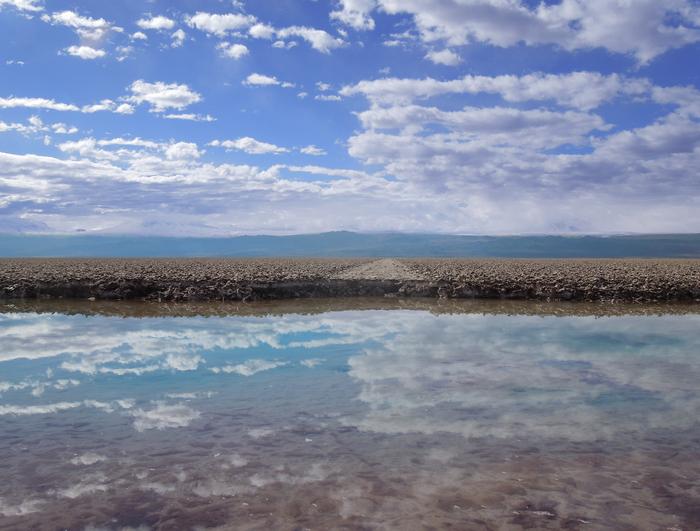The world’s transition to electric vehicles and renewable energy storage may be built on a dangerously flawed assumption. A new study reveals we’ve been dramatically overestimating the amount of freshwater available for lithium mining in South America’s “Lithium Triangle” — potentially threatening fragile ecosystems, indigenous communities, and the green energy supply chain itself.
Research published March 26 in Communications Earth & Environment shows that standard global water models have overestimated water availability by more than tenfold in the high-altitude desert region spanning Chile, Argentina, and Bolivia, which holds over half the world’s lithium resources.
“There’s not much new freshwater at all coming into these systems,” said David Boutt, professor of geosciences at UMass Amherst and the study’s senior author. While conventional models estimate annual freshwater inflow between 90 and 230 millimeters per year, the team’s new measurements show a stark reality of just 2 to 33 millimeters, depending on the basin.
This dramatic miscalculation comes as lithium demand is projected to increase fortyfold in coming decades, driven by the global push for electric vehicles and grid-scale battery storage. The findings raise urgent questions about the sustainability of current and planned mining operations in a region already struggling with water scarcity.
Led by Alexander Kirshen, a research assistant at UMass Amherst, the team examined 28 different basins across the Lithium Triangle’s 160,000 square miles of high-altitude, arid landscape. Their assessment concluded that “all but one of the 28 basins in our study should be classified as ‘critically water scarce,’ even without incorporating current, to say nothing of future, demands on the water supply,” according to Boutt.
The Lithium Triangle’s unique geology creates a complex hydrological system. Lithium accumulates in briny groundwater beneath basins where it settles in solution. These dense, lithium-rich brines often lie beneath pockets of freshwater that form lagoons, creating habitats for unique ecosystems and species like flamingos.
Traditional extraction methods involve pumping brine into evaporation ponds where the lithium concentrates before processing. However, as the industry expands, many operations are shifting to newer direct lithium extraction (DLE) technologies — which the study found can be even more water-intensive. According to the researchers, 56% of DLE operations in the Triangle use more water than traditional methods, with nearly a third consuming a staggering ten times more.
The implications extend beyond ecological concerns. Indigenous communities who have inhabited these regions for centuries depend on the same limited water resources. As mining operations expand, conflicts over water rights have already emerged in parts of the Triangle.
What makes the study particularly significant is its methodology. The remote, extreme environment of the Lithium Triangle — sitting high in the Andes with limited monitoring stations — has made accurate assessment difficult. Global hydrological models relied upon by industry and regulators were never calibrated for these specific conditions.
“The climate and hydrology of the Lithium Triangle is very difficult to understand,” Boutt noted, explaining why his team developed their own specialized model, the Lithium Closed Basin Water Availability model (LiCBWA).
The findings present a challenging dilemma for the green energy transition. Lithium remains essential for batteries powering electric vehicles and storing renewable energy, yet extracting it may deplete precious water resources in already water-stressed regions.
The research team doesn’t suggest abandoning lithium mining, but rather calls for immediate collaboration between “scientists, local communities, regulators and producers” to reduce water use and improve monitoring. Better understanding of precipitation patterns, streamflow, and groundwater levels could lead to more sustainable extraction methods.
As automakers and battery manufacturers face increasing pressure to ensure ethical supply chains, this research highlights the complex tradeoffs inherent in the clean energy transition. BMW Group and BASF, who funded the study, may be signaling a growing industry recognition of these sustainability challenges.
For now, the findings suggest that the path to a greener future may be more complicated than previously thought, requiring careful navigation of water scarcity in one of the world’s most important lithium regions.
If our reporting has informed or inspired you, please consider making a donation. Every contribution, no matter the size, empowers us to continue delivering accurate, engaging, and trustworthy science and medical news. Independent journalism requires time, effort, and resources—your support ensures we can keep uncovering the stories that matter most to you.
Join us in making knowledge accessible and impactful. Thank you for standing with us!

